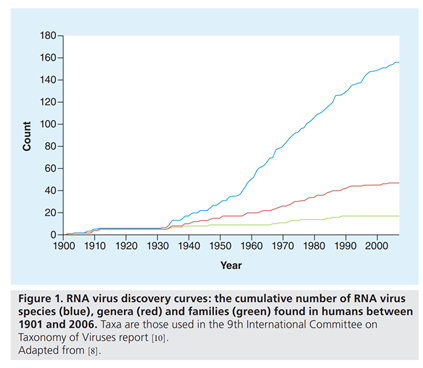How many are there?
How long would it take?
A little thread for a quiet night.
Ecologists usually measure diversity the same way, using what they call “rarefaction curves.”
futuremedicine.com/doi/pdfplus/10…
That'd bring you back down to something that makes sense: about half known to science, half undiscovered.
mbio.asm.org/content/4/5/e0…
It pushed the total way higher, to 1.67 million viruses in birds and mammals.
(You might’ve heard that number a lot lately.)
That puts you in the 600,000-800,000 range for zoonotic viruses. Way more than 297.
❓~300 zoonotic RNA viruses
❓13,000 zoonotic viruses (7,500 RNA)
❓800,000 zoonotic viruses
All produced by very smart scientists, who study emerging viruses for a living. What do we do with that? How do we make sense of it?
Let’s talk about virus hunters.
But only 1 zoonotic virus discovery is known for sure (Bas-Congo virus). It's hard to know if a virus affects us just from a genome sequence.
thelancet.com/journals/lanmi…
Techology is constantly getting better and cheaper, so they guessed it would cost a bit under $1,000 to discover each new virus.
Now that 4,243 might be ~10% of the global virome if there’s 50,000 viruses;
It would be < 1% if there's 1.7 million viruses total.
The 1.7 million viruses number is going around in press, because we want to keep funding important scientific work in the United States and abroad, with your taxpayer money.
But what GVP do we need?
To me, the most exciting ideas pitched by GVP are things like: developing a universal betacoronavirus vaccine (proposed before COVID-19!).
Ones that don’t count on virus hunting & fuzzy math 🥴







